Keywords
Fish diversity; Socio-Economic status; Sinkin River; Arunachal Pradesh; India
Introduction
Fish are invariably one of the most important biotic components of an aquatic ecosystem which apart from forming protein rich food source for human being, also act as a good bio indicators of a water body. The Northeastern region of India is one of the hot spots of freshwater fish biodiversity in the world (Kottelat and Whitten, 1996). However, the rich biodiversity of the freshwater fish of the India has been rapidly declining over the years due to excessive human activities and as well as other environmental factors.
Arunachal Pradesh is the largest north-eastern state of India in terms of geographical area as well as in river drainage network harbouring diverse fish species, of which many are still undescribed and may be endemic. The fishery resources of these waterbodies had not been completely explored because of their location in unapproachable mountainous terrain with dense forest cover. The number of workers studied fishery resources of the state. Particularly Sen (1999) who reported 52 species from Siang and Subansiri districts; Nath and Dey (2000) recorded 131 species with their systemic account; Sen (2006) recorded 143 fish species from Arunachal Pradesh; Tamang et al. (2007) reported 47 species from Senkhi stream of Papumpare district; Bagra et al. (2009) listed a total of 213 fish species from 35 rivers of Arunachal Pradesh; Bagra and Das (2010) reported 44 fish species from river siyom of the state.
However, due to topographical variations, the diversity of fish species might be varied from drainage to drainage of the entire state. The sustainable management of the aquatic resources depend on socio-economic status of the inhabitant’s people influencing the rural economy of the state. So, fish and fisheries of the lotic waterbodies might have played as an instrument of livelihood for a large section tribal population of the area. However, hardly any information is available still on such aspects from this area. Keeping the above views in mind an attempt has been made to explore the fish and fisheries of the river system and to correlate the tribal socio-economy with the produce from tributaries of Sinkin river, Lower Dibang valley of Arunachal Pradesh.
Material and Methods
The present study was carried out from the drainages of Sinkin river in Lower Dibang valley of Arunachal Pradesh (Figures 1 and 2). The river is originated from the upper Dibang River and demarcated by cultivation land in the west and Anpum village in the east side. Sampling was done from small drainages of Siram and Sarku on the seasonal basis during January-December, 2015. For which, the two sampling site were selected and marked as site I (27°58’ 14.0” N and 95°34’29.5” E) and II (27°59’27.2”N and 95°29’03”E). From the sampling station, the down streams after flowing a distance of about 40 km joins the Siang river. The fish specimens were caught using cast net and electro-fishing randomly from the stretch of the streams tributaries and later the specimens were preserved in 5% formalin and identified with the help of standard keys of Talwar and Jhingran (1991) and Vishwanath et al. (2007). The conservation status of the recorded fish species were also evaluated (IUCN, 2015). The relative abundance of the recorded fish species was calculated by following procedure of Fisher et al. (1943).
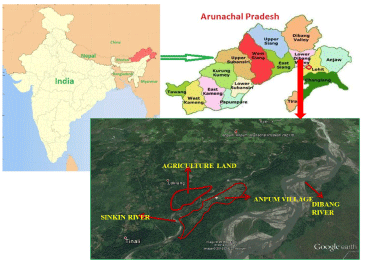
Figure 1: Satellite imaginary of the study area (Sinkin River).
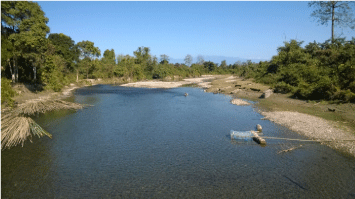
Figure 2: A view of Sinkin River.
The Sinkin River is somewhat Zigzag shaped, steeply sloping with pools at some extent. The nature of particles in the stream bottom was almost full of silt, clay, mud, gravel and cobbles. Presence of logs and large woody debris in stream was quite significant and the organic materiali.e., leaves and twigs in stream were occasionally occurred. The approximate depth of the river was recorded as 3-4 ft and as 5-6 ft at pool area while, approximate width of the stream was 500 ft. The shape of channel was being wide and shallow at large extent. The riparian zone of the river was full of trees, bushes, shrubs etc.
Socio-economic status of villagers was investigated from Anpum village based on the printed questionnaire and through personal interview. Anpum village is situated uniquely having one side bordered by the river Dotung, a small tributary of river Dibang, and on the other bordered by river Sinkin. This unique position has made this village extremely dependent on riverine resources for people’s livelihood. Information furnished by the respondents was analysed and correlated with fish and fisheries of the surrounding river system. During the survey, type of family, size of family, educational status, land holding, land use pattern, occupation, assets and annual income were considered as the Household characteristics of the inhabitant communities. Besides the information on traditional fisheries resource management (Fisheries Regulations Act, Village regulation, penalty imposed etc.) were also collected through instant interaction with the village chief and aged person. The respondents were made thoroughly convinced that the information obtained would not harm them in any way.
Results and Discussion
Fish Diversity of Sinkin River and its Drainages
A total of 42 species has been recorded under 34 genera and 15 families (Table 1 and Plates 1A-1C). It has been observed that among the families Cyprinidae was the most dominant, which includes 14 species accounting a percentage of 33.3% (Figure 3). Next followed by Nemacheilidae family with 6 species holding 14.29% share which is followed by Bagridae and Cobitidae with 4 species each and accounting 9.52% each. These are further followed by Siluridae, Amblyciptidae and Badidae comprising each with 2 species accounting 4.76%. Whereas, families like Channidae, Olyridae, Heteropneustidae, Psilorhychidae, Sisoridae, Belonidae, Balitoridae, Chandidae with one species each and accounting 2.38% . In terms of ichthyo faunal diversity, the similar observation was found in the Siang River where Cyprinidae family dominates (Bagra et al., 2009; Bagra and Das, 2010; Das et al., 2015).
| Family |
Sl.No. |
Scientific name |
% RA |
IUCN Status |
| Cyprinidae |
1 |
Rasbora rasbora |
3.29 |
LC |
| 2 |
Puntius sophore |
1.09 |
LC |
| 3 |
Puntius ticto |
0.37 |
LC |
| 4 |
Barilius barna |
5.86 |
LC |
| 5 |
Labeo gonius |
1.09 |
LC |
| 6 |
Barilius bendelisis |
12.45 |
LC |
| 7 |
Bangana dero |
1.46 |
LC |
| 8 |
Chagunius chagunio |
15.38 |
LC |
| 9 |
Crossocheilus latius |
1.83 |
LC |
| 10 |
Garra lamta |
0.73 |
LC |
| 11 |
Puntius sarana |
1.46 |
LC |
| 12 |
Devario aequipinatus |
6.23 |
LC |
| 13 |
Devario assamensis |
4.76 |
V |
| 14 |
Pethia ticto |
1.09 |
LC |
| Psilorhychidae |
15 |
Psilorhynchus balitora |
2.56 |
LC |
| Nemacheilidae |
16 |
Acanthocobitis botia |
2.56 |
LC |
| 17 |
Aborichthys kempi |
3.66 |
NT |
| 18 |
Aborichthys sp. |
1.46 |
DD |
| 19 |
Schistura manipurensis |
5.13 |
NT |
| 20 |
Schistura beavani |
1.83 |
LC |
| 21 |
Schistura sp. |
0.37 |
DD |
| Balitoridae |
22 |
Balitora brucei |
0.37 |
NT |
| Cobitidae |
23 |
Lepidocephalichthys sp. |
0.73 |
DD |
| 24 |
Lepidocephalichthys guntea |
0.73 |
LC |
| 25 |
Botia rostrata |
0.73 |
V |
| 26 |
Lepidocephalichthys annandalei |
1.09 |
LC |
| Bagridae |
27 |
Mystus dibrugarensis |
2.93 |
LC |
| 28 |
Batasio batasio |
1.09 |
LC |
| 29 |
Mystus bleekeri |
2.19 |
LC |
| 30 |
Batasio fasciolatus |
2.19 |
LC |
| Siluridae |
31 |
Ompok pabo |
0.73 |
NT |
| 32 |
Kryptopterus indicus |
0.37 |
DD |
| Amblyciptidae |
33 |
Amblyceps apangi |
0.37 |
LC |
| 34 |
Amblyceps sp. |
0.73 |
DD |
| Sisoridae |
35 |
Pseudolaguvia sp. |
0.73 |
DD |
| Heteropneustidae |
36 |
Heteropneustes fossilis |
1.09 |
LC |
| Olyridae |
37 |
Olyralongi caudata |
1.09 |
LC |
| Belonidae |
38 |
Xenentodon cancila |
1.09 |
LC |
| Chandidae |
39 |
Chanda nama |
3.29 |
LC |
| Badidae |
40 |
Badis assamensis |
0.73 |
DD |
| 41 |
Badis badis |
0.73 |
LC |
| Channidae |
42 |
Channa punctata |
2.19 |
LC |
Table 1: List of fish species, relative abundance and their status.
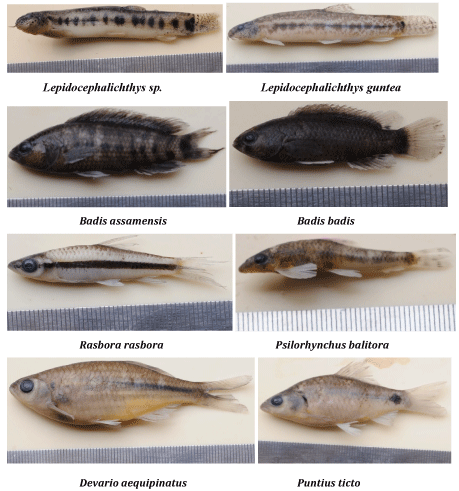
Plate 1a: Some edible and ornamental fish species from Sinkin River.
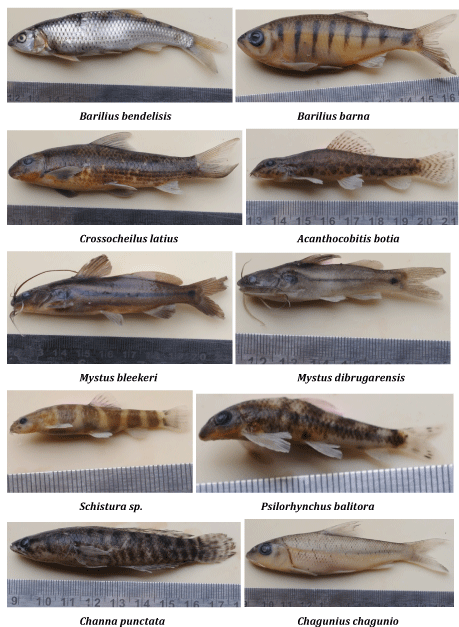
Plate 1b: Some edible and ornamental fish species from Sinkin River.
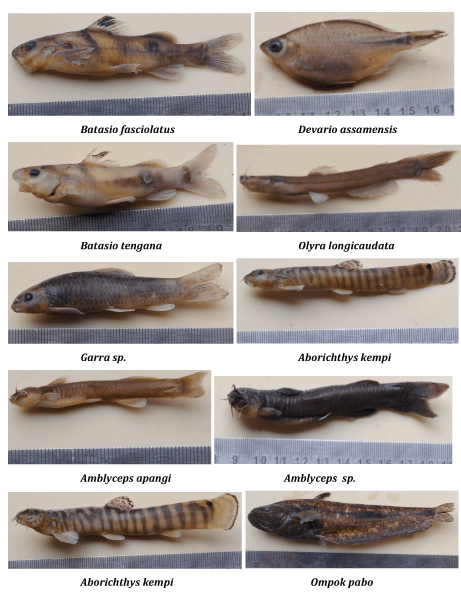
Plate 1c: Some edible and ornamental fish species from Sinkin River.
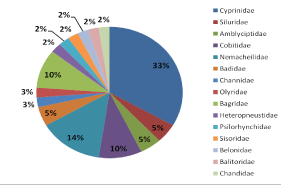
Figure 3: Percentage composition of fish diversity.
As far as their relative abundance is concerned, the highest values (15.38%) was recorded in Chagunius chagunio next followed by Barilius bendelisis (12.45%) and lowest (0.37%) in Puntius ticto, Amblyceps sp., Sistura sp., Balitora brucei, Kryptopterus indicus etc. Maintaining fish diversity is important because it is not easy to identify which individual species are critical to aquatic ecosystems sustainability (Das et al., 2015). As per IUCN (2015), among the species 29 sp. falls under the Least Concerned (LC) with 69.05%; 7 sp. were in Data Deficient (DD) with 16.67%; 4 sp. were in Near Threatened (NT) with 9.52% and 2 sp. were in Vulnerable (V) category with 4.76%.(Table 1 and Figure 3)
Socio-economic status
As far as socio-economic status of villagers in Anpum is concerned the population of the area belonged to the Pudun and Adi tribe which is one of the scheduled tribe (ST) of Arunachal Pradesh. Traditionally they are cultivators and fishers. Moreover, these people live by the side of the huge cultivation land and fishing drainages, as they are fully benefited by these resources. The cultivation lands are controlled by themselves while fishing area is controlled by leaseholders for one year. Bidding for the fishing areas was take place among handful of rich people. Usually, fishers are paid in cash to the village head (Goanbura) for development of the village. The fishers do not have any access to market hence, the fishes was collected by fishmonger from the landing site and have to sold it at Pashighat market which is about 40 km from Anpum village. Payment is generally done at the local market price.
Total number of households in the study area was 134, out of which 80 households were randomly selected (Table 2). The number of 80 household profiles represented 435 populations and out of which 223 are females and 212 are males. It indicated that most fishers had to manage their families dominated by adult members. Majority (87.5%) of them had joint families and rest 12.5% as nuclear families and each family had more than 5 members in the house hold. The maintenance of such medium joint families obviously required more or less higher income. Educational status reveals that illiteracy rate was recorded as 32.64%. As per members of respondent’s family were found 57.2% for up to primary level, 6.20% for up to high school level, 3.21% for up to higher secondary and 0.67% for up to graduate level. Other formal education or technical qualification, whatsoever was found to be nil. Agriculture was however found to be an uncertain venture, as the area is regularly inundated by flood. Agriculture was main source of income for 55.17% family and fishing as 34.94% family while, their subsidiary occupation as 9.88% (included fish retailing, animal husbandry, daily wage). The other main use of water body was recorded as 100% for bathing/Agriculture and drinking at some extent. According to respondent’s family the present status of the fisheries in the area was also increased (100%). As far as average monthly family income is concerned, 12.5% was found to be recorded up to Rs. 5,000/-, 37.5% family up to Rs. 10,000/ and for 50.0% family more than Rs. 10,000/. The socio-economic status of the fishermen is directly or indirectly dependent on the fish catch as their main occupation is agriculture. These water bodies are one of the main sources of income for them and somehow they have managed the family. It was also noticed that all men of the family above 20 years were reported to be engaged in fishing activity. On the other hand, the minor members below 10 years grouped and used to catch the large fishes by using spears, hooks and multiple forks. It might be mention that as 100% respondents admitted there has been prohibited (banned) in all kinds of fishing activity from June to August as a part of conservatory measures.
| Sl.No. |
Parameters |
No |
% |
| 1 |
Household |
80 |
|
| 2 |
Population |
|
435 |
|
| |
Male |
212 |
48.73 |
| Female |
223 |
51.27 |
| 3 |
Size of family |
Nuclear |
10 |
12.5 |
| Joint |
70 |
87.5 |
| 4 |
Educational status |
Illiterate |
142 |
32.64 |
| Primary level |
249 |
57.24 |
| High school level |
27 |
6.20 |
| Higher secondary level |
14 |
3.21 |
| Graduate level |
3 |
0.67 |
| 5 |
Main occupation |
Agriculture |
240 |
55.17 |
| Fishing |
152 |
34.94 |
| Other |
43 |
9.88 |
| 6 |
Main use of waterbody |
Bathing /Agriculture |
|
100 |
| 7 |
What is present status of the fisheries?
- Increase production per year as per their observation
|
|
100 |
| 8 |
Monthly family income |
|
|
| |
1. Upto 5,000/- |
10 |
12.5 |
| |
2. Upto 10,000/- |
30 |
37.5 |
| |
3. More than 10,000/- |
40 |
50.0 |
Table 2: The household profile of the Anpum village.
Fishing is a part of their day to day practice for selling and consumption only. It be mentioned that fishes are an indispensible part of their festival “Ali Ligang” where fishes are offered to the mother Earth to satisfy her and receive her blessings. The villagers of the Anpum generally used different gears while they caught the fishes from the drainages of the Sinkin River. Every family had fishing nets (cast net), basic design of bamboo (Porang, Dirang, Dirkup, Saloni, Juroki) and other fishing gears (spears, multiple fork, hooks etc.) as personal property. Now a day they also prefer to use the generator (electro-fishing) than traditional gears for capture of different size fish species. Moreover, they used small wooden boat while fishing practice. (Table 2)
Conclusion
From the above investigation, it is clear that the drainages system exhibit a good number of ornamental and edible fish species. For which, the indigenous tribal could continue and adopt as alternative livelihood by export trade and supply to nearby and national markets. Proper scientific technique of fishing and fish culture would help in the upgradation of tribal’s status and a long term and effective management plan should be adopted for conservation. The Govt. may also come out with intensified programmes encouraging formation of fishers co-operative and providing extra additional facilities.
Acknowledgement
The authors are thankful to Department of Biotechnology (DBT), Govt. of India for financial help to carry out the work and also grateful to Dr. Achom Darshan for his help in the identification of specimens and Dhanbir Tamang for his cooperation in collection of species.
9104
References
- Bagra, K., Das, D. N. (2010). Fish diversity of river Siyom of Arunachal Pradesh; A case study.Our nature, 8,164-169
- nBagra, K., Kadu, K., Sharma, K. N., Laskar, B. A., Sarkar, U. K. et al., (2009). Icthyological survey and review of checklist of fish fauna of Arunachal Pradesh, India. Check list, 5, 330-350
- nDas, B. K., Boruah, P., Kar, D. (2015). Icthyofaunal Diversity of Siang River in Arunachal Pradesh, India. Proc. Zool. Soc., 1-9
- nFisher, R. A., Corbet, A. S., Williams, C. B. (1943). The relation between the number of species and the number of individuals in a random sample of an animal population. J. Anim. Ecol., 12, 42–58
- nKottelat, M., Whitten, T. (1996).Freshwater biodiversity in Asia with special reference to Fish, World Bank, Technical paper No. 343, Washington, D C. 17-22
- nNath, P., Dey, S. C. (2000). Fish and fisheries of North Eastern India (Arunachal Pradesh). New Delhi. Narendra Publishing House, 217.
- nSen, N. (1999). On a collection of fishes from Subansiri and Siang districts of Arunachal Pradesh. Rec. Zool. Surv. India,97,141-144
- nSen, T. K. (2006). Pisces. In: Fauna of Arunachal Pradesh. State fauna Series 13 (Part 1): 317- 396, Zool. Surv., India Publication,396
- nTalwar, P. K., Jhingran, A. G. (1991). Inland fishes of the India and adjacent countries.Oxford and IBH Publishing Co. New Delhi 541
- nTamang, L., Chaudhury, S., Chodhury, D. (2007). Icthyofaunal contribution to the state and comparison of habitat contiguity on taxonomic diversity in Senkhi stream, Arunachal Pradesh, India.J. Bombay Nat. Hist. Soc., 104, 170-177
- nVishwanath, W., Lakra, W. S., Sarkar, U. K. (2007).Fishes of North East India, NBFGR.Lucknow, U. P. India, 264.












